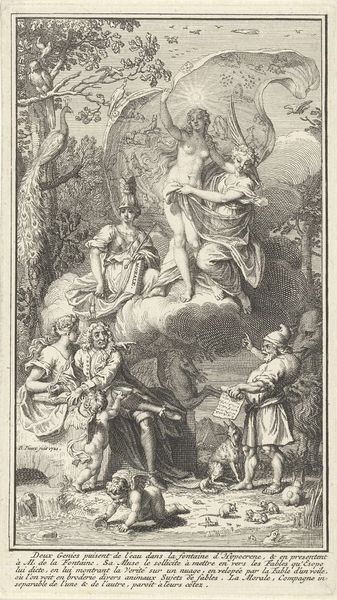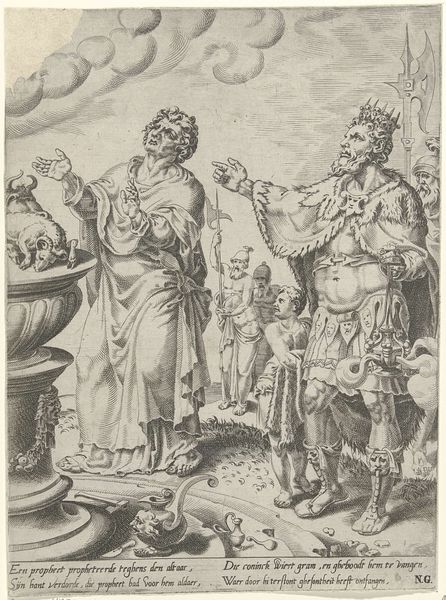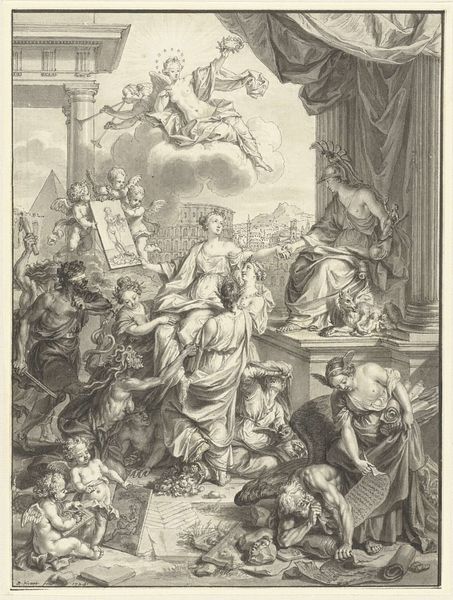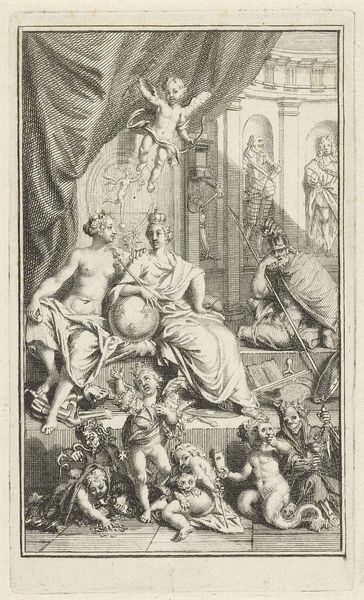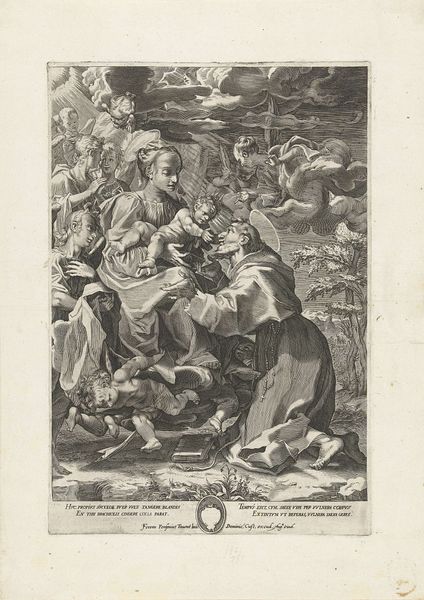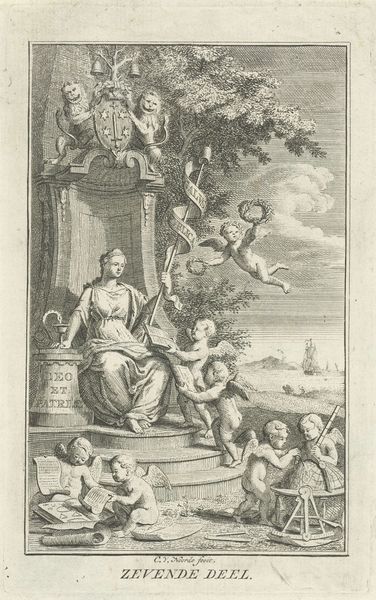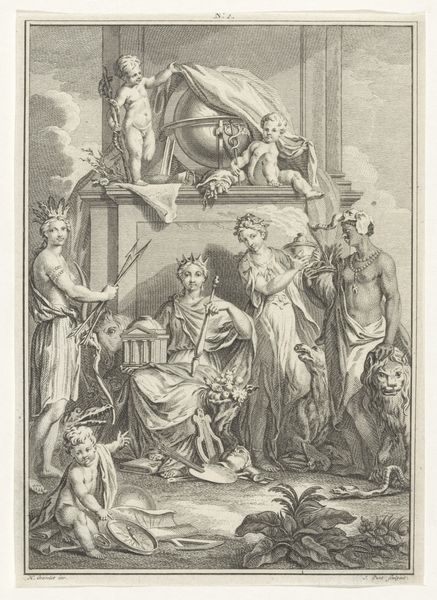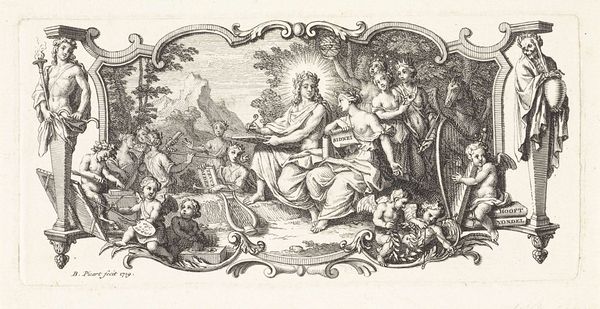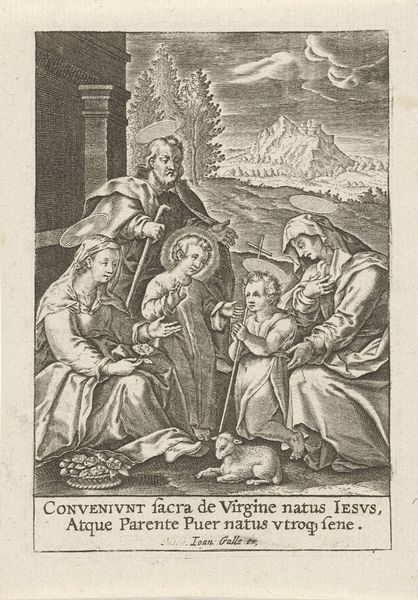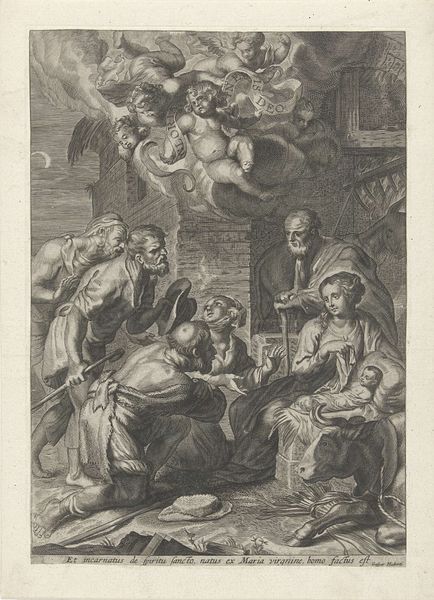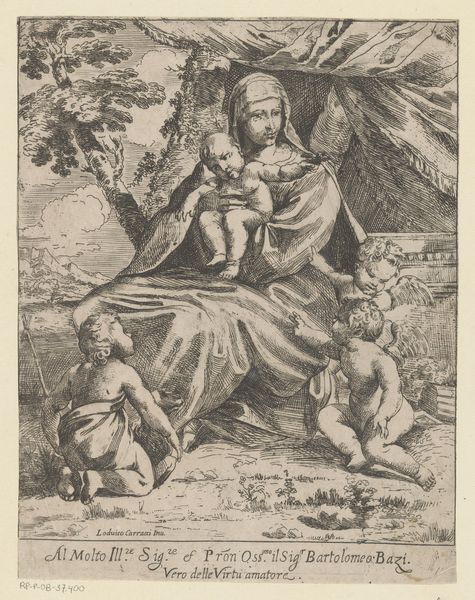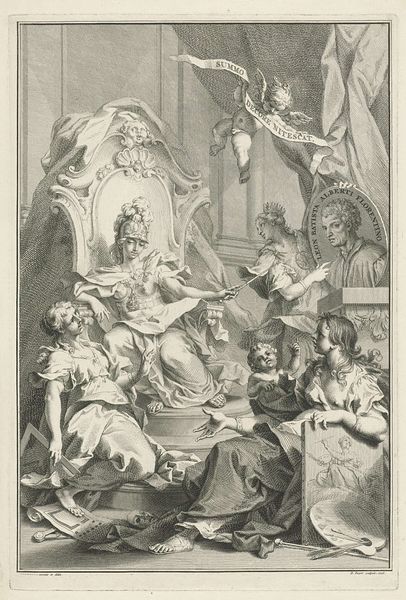
Allegorische voorstelling met portretbuste van Charles de Saint Denis 1724
0:00
0:00
engraving
#
portrait
#
allegory
#
baroque
#
pen drawing
#
old engraving style
#
figuration
#
line
#
history-painting
#
engraving
Dimensions: height 144 mm, width 88 mm
Copyright: Rijks Museum: Open Domain
Editor: This is "Allegorical Representation with Portrait Bust of Charles de Saint-Denis", an engraving from 1724 by Bernard Picart. It feels like a celebration of knowledge and the arts, almost overwhelmingly complex with its many figures and symbols. How do you interpret this work and its message within the historical context of its creation? Curator: It's true, at first glance it does seem celebratory. But let's dig a little deeper, keeping in mind the social hierarchies and intellectual movements of the early 18th century. Consider the figure of Charles de Saint-Denis being honoured. He was a soldier, and then a philosopher later in life. This shift represents a move from military life to intellectual pursuits and highlights a specific form of elite masculine identity prized during the Enlightenment: the learned warrior turned scholar. Does seeing him in this context shift your understanding of the print’s message? Editor: That does change things! The figures around him seem to represent aspects of his life, almost literally playing out a choice between war (Mars) and the "Volupte", philosophy and arts… Perhaps it reflects anxiety about abandoning a militaristic lifestyle? Curator: Precisely! It shows how individuals were framed within specific ideological and social structures. Notice how the inscription alludes to abandoning the "métier de la guerre" in favor of philosophy and pleasure, but frames the latter as stemming from "honnête Volupté." What could this honesty refer to? Editor: Maybe that Saint-Denis’ pursuit of philosophy is virtuous, since he abandoned his violent past to better himself. It reminds me of the narratives people tell about self-transformation! Curator: Yes. The print acts as propaganda of virtue! But whose definition of virtue are we seeing? The piece speaks to specific gendered ideals; it uses binary terms to create distinctions of good and bad that legitimized class hierarchies in art and society. Thinking critically, what’s gained and what's lost when figures of power sponsor their own narrative? Editor: Wow, I hadn't considered it that way. I was so focused on the art itself, but now I can see how it embodies the politics of its time. Curator: It's about situating art within a matrix of power, isn’t it? Recognizing how representations—even allegorical ones—are never neutral. Editor: Right! This print reveals more about societal values and the promotion of particular ideals than simply celebrating Saint-Denis as an individual. Curator: Exactly. Understanding the intersections of power and representation allows us to have a far richer reading of this seemingly simple engraving.
Comments
No comments
Be the first to comment and join the conversation on the ultimate creative platform.
